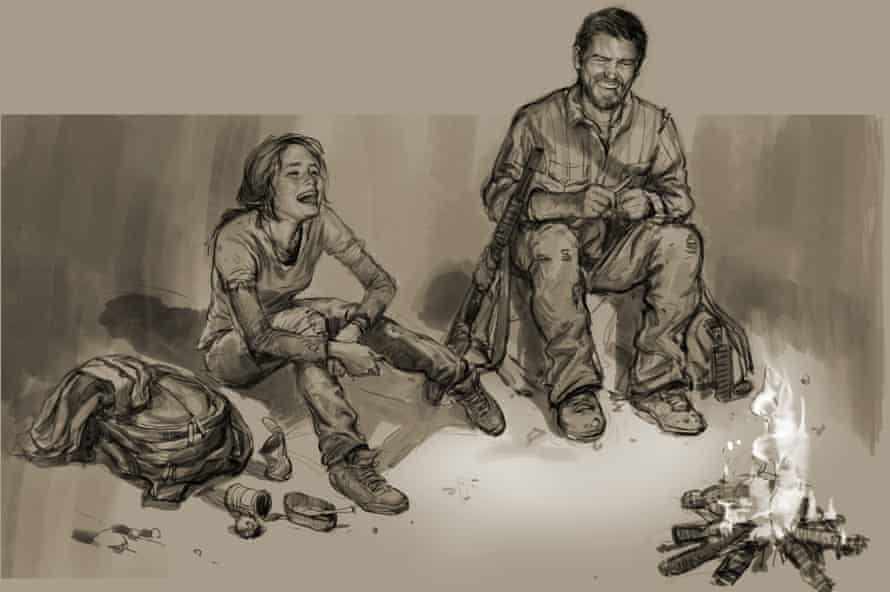video games design play disrupt
V ideo games are a unique and sometimes messy mixture of everything from visual arts to music, coding and animation, typically experienced at home over the course of 10 hours or more. This makes them a fascinating subject for design critics and curators, but it also means that they do not adapt well to a museum setting. The soul of games – the thing that gives them their power – is interactivity, the chance to be a participant, rather than an observer. This is the very thing that's taken away when they are placed in a museum, where they can be seen and read about – but not played.
Places like Berlin's Computerspielemuseum and exhibitions like the Barbican's Game On have focused on video games' history as a technology: arcade cabinets and old computers give way to sleek-looking modern consoles, as the displayed works progress from lines and dots to pixel sprites to polygonal 3D models to realistic characters in beautifully-rendered worlds.
But there are no Pong or Pac-Man arcade cabinets, short profiles of technological innovators or glass displays of old PlayStations in the V&A's Videogames: Design/Play/Disrupt exhibition, opening this week. This is the first such major exhibition to treat games as a modern cultural force, and it begins its examination in the mid-00s. For anyone interested in the artistic, emotional and radical potential of video games, that's just when they started to get more interesting.

The Design section selects eight games from the past 15 years as examples of the process and beauty of video game design. It opens with Journey, a game about a traveller and a mountain that is continually rolled out by the games-as-art crowd. Images and footage from the games appear alongside artefacts from their development – notebooks, photographs, storyboards and mood-boards, sketches, prototype versions, well-thumbed novels that inspired their creators.
Usually discourse around games focuses so intensely on the products themselves that players rarely get to peek behind the curtain of video game development to see who created them, how and why. Far from puncturing the magic, seeing a spreadsheet breaking down Journey's eight stages by mood, colour palette and the intended effect upon the player only enhances appreciation of the work, for those who've played it.
Video of Bloodborne, a seminal gothic-horror game from Japan, is accompanied by commentary that verges on performance poetry, which does a much better job of conveying what it feels like to play than text or screenshots. A wall of colourful trucker hats and skater shirts illustrates the fashion of Splatoon, a game about warring squids heavily inspired by 90s street style. Consume Me, a humorous commentary on dieting and body image made by one person, sits alongside The Last of Us, a blockbuster action game that sold in the millions.

Video games are a marriage of art and technology, and there are references to polygon counts and AI routines in these displays, but what sits alongside them shows the broader range of modern video games. Magical-realist adventure game Kentucky Route Zero's eclectic references are especially illuminating, encompassing a Magritte painting, a Faulkner novel, and scenes from a performance of Death of a Salesman.
The following Disrupt portion of the exhibition zeroes in on games as a force for social and political change and commentary. Activist games like A Series of Gunshots, a distressing black-and-white commentary on games' over-reliance on firearms, sit alongside quotes and talking-heads videos from critics, developers and academics on games' successes and failures at tackling sex, gun violence, racism, language equality and politics.
The works in this section – such as Nina Freeman's How Do You Do It, about a girl trying to figure out sex with the aid of a couple of plastic dolls, and Phone Story, a commentary on exploitative manufacturing that was banned from Apple's app store, are decidedly less commercial. They provide a glimpse into the radical side of game development that has blossomed since the early 00s as game-making tools have become easier to use.
Play, the final section of the exhibit, looks more like what might be expected from a video game exhibition. Short films detail the collaborative efforts of Minecraft players, who come together to recreate places from fiction and history within the game; the 7500 Eve Online players who participated in the biggest battle in the online space-opera's history; and the team who won 2017's League of Legends world title in a Beijing stadium filled with 90,000 live spectators (and millions more online).
An arcade filled with unexpected games like Anna Anthropy's provocative and moving Queers in Love at the End of the World and a cabinet fashioned from a broken-down car shows the punk side of modern game development, in which independent artists tour their creations around parties and collectives that celebrate the offbeat.

For people who have been following video games' cultural journey for decades, Design/Play/Disrupt might teach you the odd thing about games that you already love, such as Journey's attempt to avoid cultural bias by making its characters abstract. Alongside some works that are instantly recognisable, there are many games featured here that even ardent students of left-field game culture may not have encountered before. Games move so fast that they are impossible to capture; this is one of the great joys of covering them. Trying to define what video games are, in their totality, is as futile as trying to define what art is.
Design/Play/Disrupt captures a vital 15 years in the evolution of video games. It portrays them not as a disinterested media sees them, as violent weapons of mass distraction, but as their culturally engaged players and creators see them: a multifarious art form bristling with possibilities – and a force for change.
video games design play disrupt
Source: https://www.theguardian.com/games/2018/sep/05/was-that-a-reference-to-magritte-design-play-disrupt-review
Posted by: williamsalksomed.blogspot.com

0 Response to "video games design play disrupt"
Post a Comment